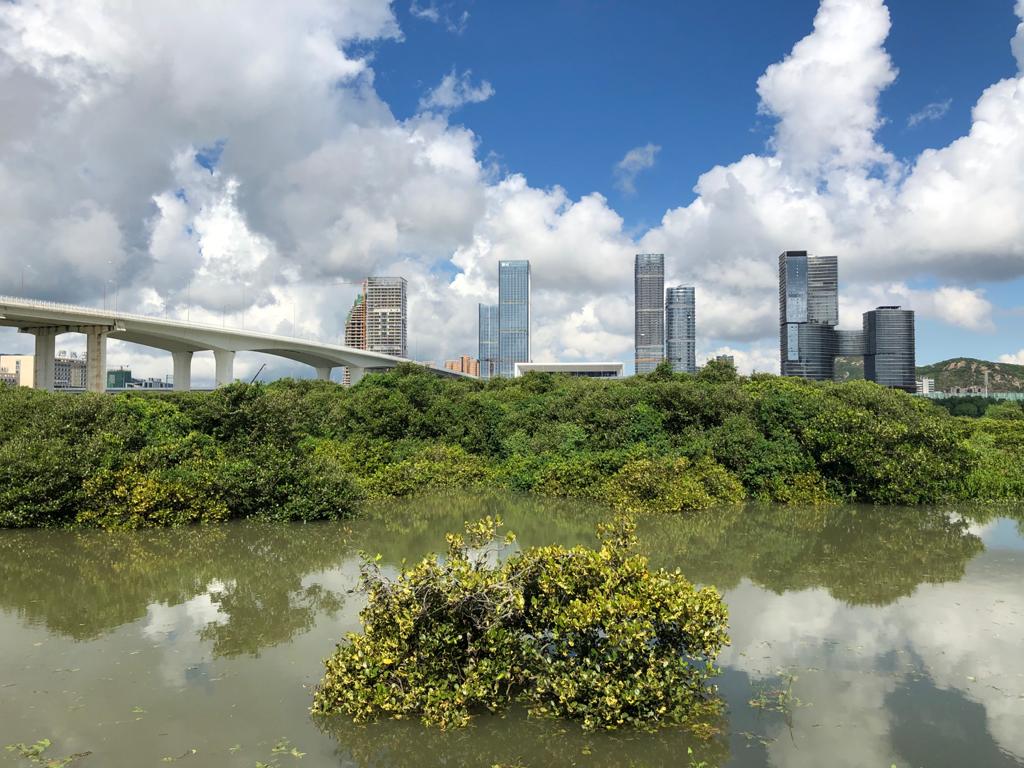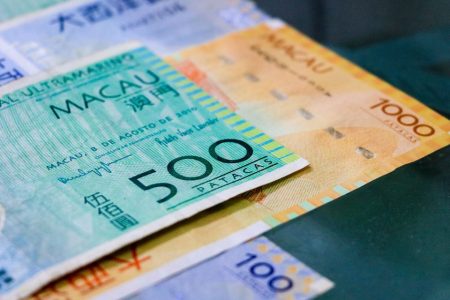This World Wetlands Day on 2 February, let’s celebrate Macao’s valuable mangroves. Not only do these natural treasures protect the city from storm surges and promote biodiversity but they also store carbon more efficiently than any other ecosystem.
When cycling along the Taipa waterfront on Avenida dos Jogos da Ásia Oriental or the Lotus Cycling Track along Avenida Marginal Flor de Lotus in Cotai, you’re sure to spot clusters of trees and plants along the coastline.
You may not realise it, but these are mangrove forests, one of the most ecologically valuable ecosystems in the world.
The word mangrove originates from the Portuguese word, mangue, or Spanish, mangle, meaning “tree” and the English word “grove”. Known in Chinese as 紅樹林 (red forest), mangroves comprise groups of trees, shrubs, and plants that thrive in coastal saline and brackish waters. They particularly flourish on the fringes of estuaries and lagoons.
Mangroves are able to tolerate salty water, adapting to high tide and low tide with ease. Other plants would struggle to survive in such a harsh and changing environment, but mangroves have adapted in amazing ways.
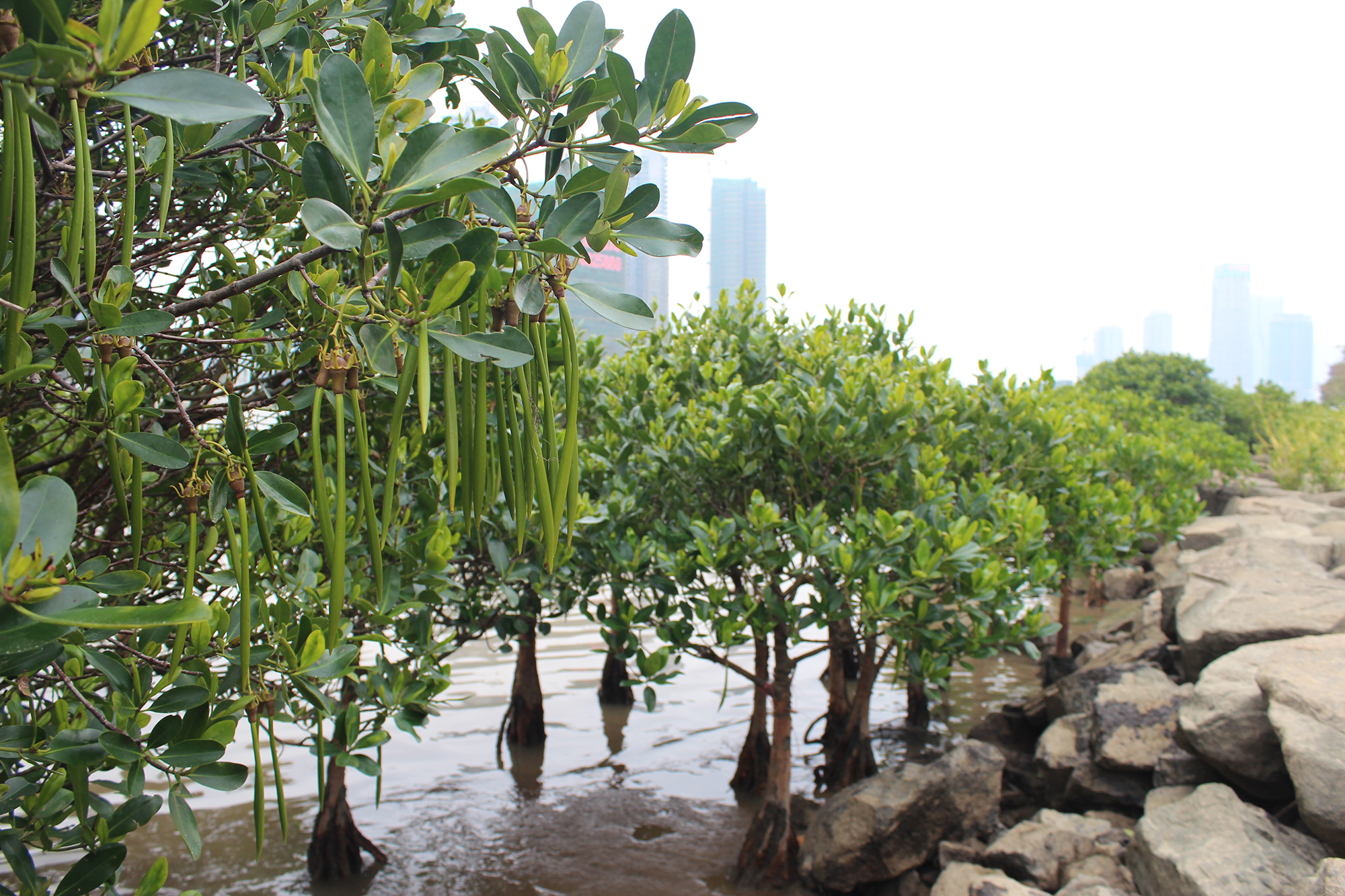
Roots of the sea
Each mangrove forest is a maze of roots and branches wriggling out of very soft, and sometimes pungent, mud. Just like humans, plant roots need oxygen to grow and thrive. Breathing would be difficult in a mangrove forest where the soft, wet soil limits oxygen exchange.
To survive in the changing water conditions along the coast, mangroves like those in Macao have developed “breathing roots” called pneumatophores, which look like fingers protruding above the soil surface. Other mangroves have stilt-like roots, which not only allow for “breathing” but also anchor the plants in unstable mud impacted by tides and waves.
Mangroves have also developed strategies to deal with the salt in their environment. For most plants, even the relatively lower salinity of brackish water would reduce growth at best, and kill at worst. Not mangroves, though. They can excrete salt from their leaves or thwart salt from entering their roots when taking in water – some do both.
Another very interesting adaptation of some mangroves species is the ability of seeds to germinate while still with the parent tree. Called vivipary, these candle- or pen-shaped seeds can float and attach to sediments, taking root in shallow water. This process helps mangroves propagate and survive in the very unstable intertidal environment.
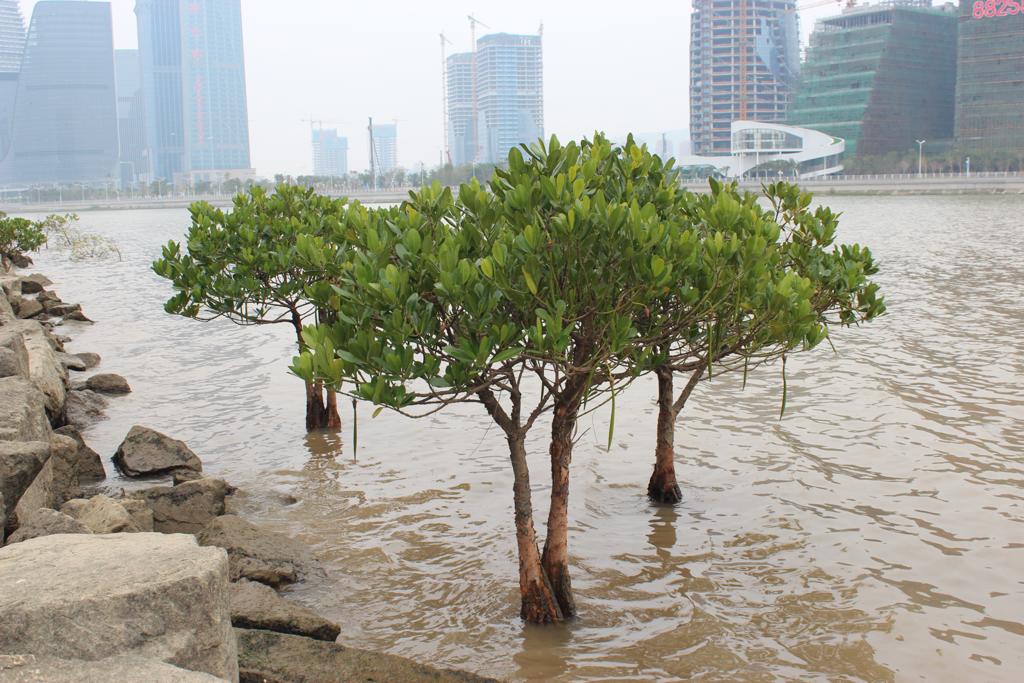
Macao’s remarkable mangroves
Thanks to these remarkable adaptations, mangroves currently grow in over 120 countries and territories around the world, most of which have tropical or subtropical climates.
Did you know that most mangroves – 42 per cent – are found in Asia? Africa hosts the second-highest population (20 per cent), followed by North and Central America (15 per cent), South America (11 per cent), and Oceania (12 per cent).
Despite its small size and urban environment, Macao is home to healthy mangrove forests that sprawl about 4 kilometres of the Taipa–Coloane coastline. The majority of these mangroves grow within the 40-hectare Ecological Zone II in Cotai, which is managed by the Environmental Protection Bureau.
A mangroves restoration area in Taipa, managed by the Municipal Affairs Bureau, is also home to a variety of mangroves species. Some patches can also be found in a small protected area in the eastern side of Coloane as well as the Macao Peninsula.
If mangroves grow so well in Macao, why isn’t the city’s entire coastline covered in them? Not all coastal areas are a good fit for these forests.
Even though they need some tidal activity to bring them nutrients and aerate their soil, mangroves can only grow in areas protected from strong waves. So you won’t see mangroves on the beaches of Hac Sa or Sai Van, or along the rocky shores in Coloane – the waves here are too powerful.
There are more than 70 mangrove species worldwide – each suited to different environments – and we have seven species right here in Macao.
The smallest of these is the mangrove fern, Acrostichum aureum, which is very sparse and mostly found closer to the land. Another dominant landward species is Acanthus ilicifolius. Commonly referred to as sea holly, the shrub features spiny stems and serrated leaves. In springtime, these shrubs blossom into a beautiful field of purple and white flowers, a rare natural delight in a city like Macao.
Another common species in the region, usually found from the middle to the landward part of mangrove forests, is Bruguiera gymnorrhiza. Often called the large-leafed mangrove, this species has large leaves and bright red flowers. Though it’s relatively new to Macao, recently planted saplings can be found along the Taipa coast.
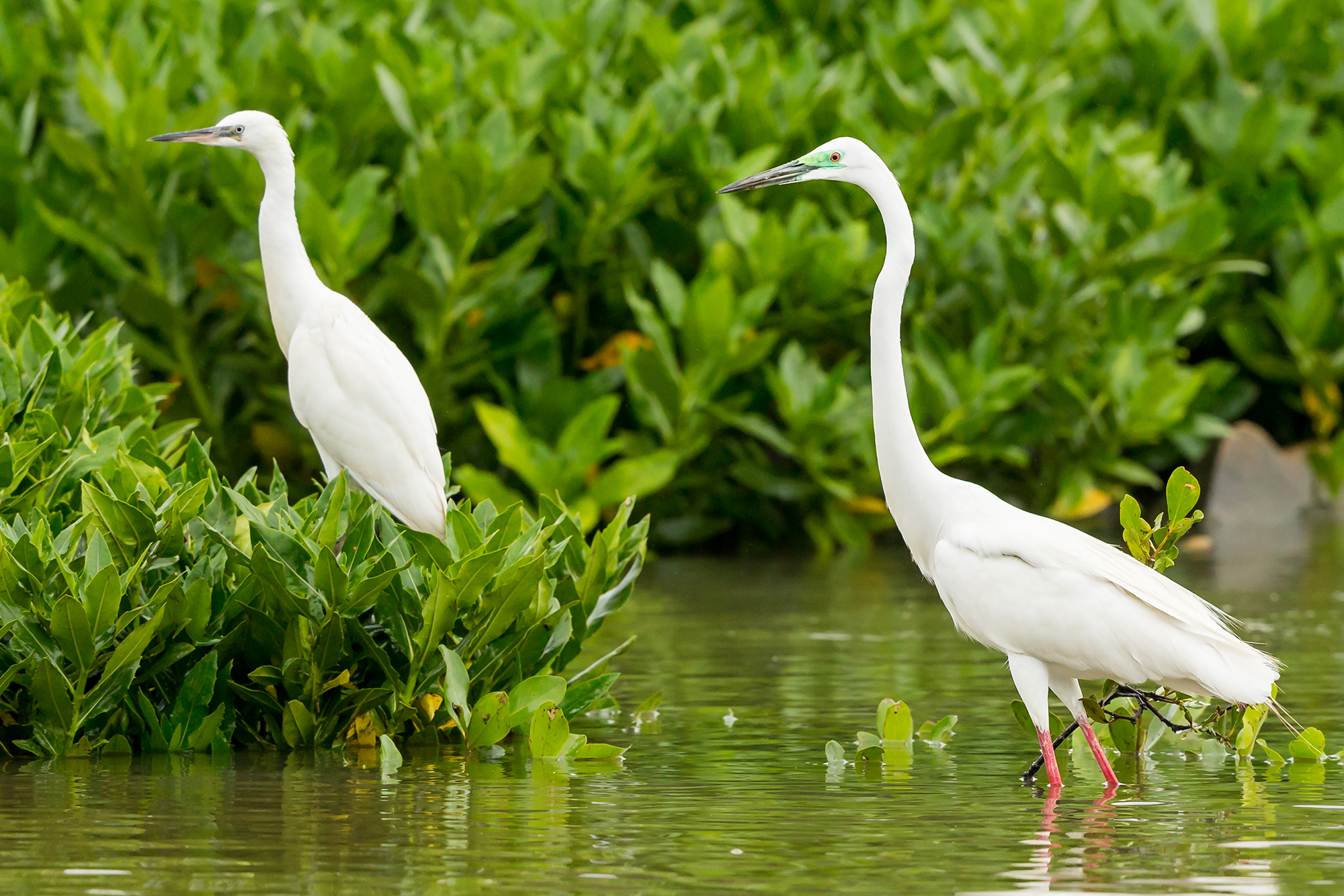
‘Wastelands’ or natural treasures?
For a long time, people did not care about the mangroves in Macao. The soft mud and sulphurous smell gave mangroves a bad reputation; many considered them to be “wastelands” of little or no value. But over the years, researchers have shown that mangroves provide a wide range of benefits to humans and the planet.
For starters, the mangroves of Macao dramatically boost biodiversity by providing homes and shelters to many plants and animals. Local and migratory birds live inside these wetland forests, including the endangered black-faced spoonbill, which spends its winters in the mangroves. They also serve as breeding and nursery grounds for aquatic animals like fish, crustaceans, and molluscs.
They also help make Macao a cleaner, safer environment. Because of the city’s geographic location and surrounding tidal patterns, coastal pollution is a serious issue.
Mangroves, sometimes called “natural wastewater treatment facilities”, have a unique ability to trap sediments and filter pollutants, such as heavy metals, which greatly benefits marine life.
They also offer a nature-based solution for climate change mitigation and adaptation. In a coastal city like Macao, which is vulnerable to impacts of storm surges, mangroves can act as a “green wall,” effectively buffering the impact of strong waves and protecting the coastline.
This helps prevent and reduce coastal erosion while also providing a measure of protection to people and property in coastal areas. We need only look back on the devastation wrought by flood waters during Typhoon Hato in 2017 to understand the value of investing in mangroves.
But that’s not all. Because of their unique root system and soil conditions, mangroves far outpace terrestrial forests in their ability to capture and store large quantities of carbon. Much of this carbon is stored below ground in the soil and dead roots, minimising carbon release into the atmosphere. They also filter air pollution, which can be an issue in Macao, and supply oxygen for the city.
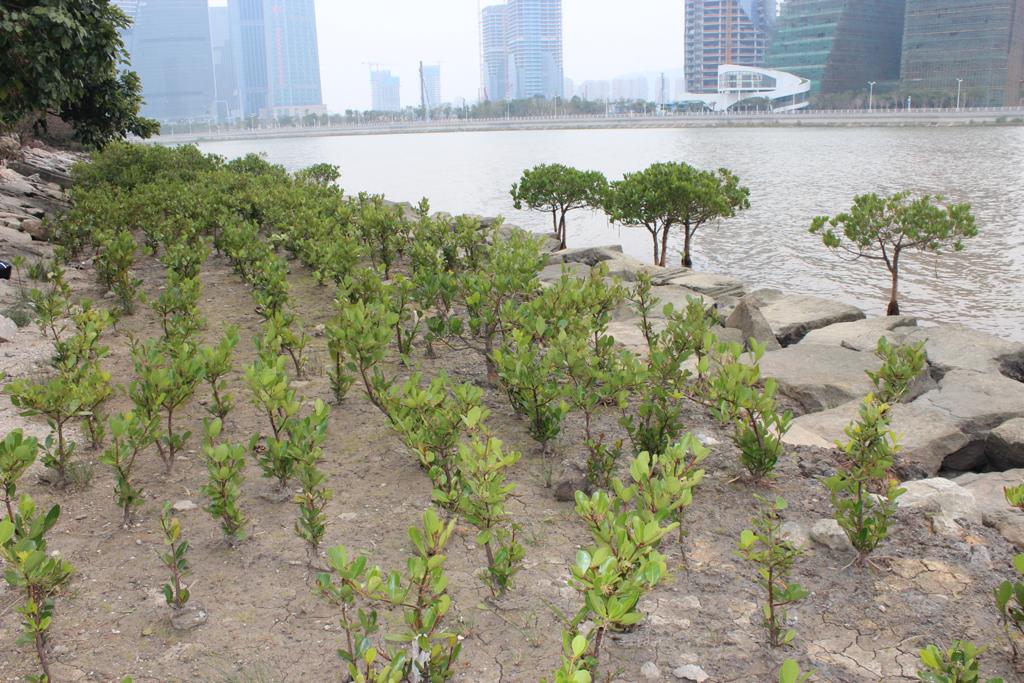
Seedlings of hope
Despite their proven value, mangroves have long been marginalised and face a barrage of threats worldwide. More than 35 per cent have already disappeared, and an estimated 1–3 per cent are lost globally each year. Human activities, such as the clearing of mangrove forests for aquaculture or the impact of rapid development in coastal areas, account for most of the damage.
But there is cause for hope. A recent report, the “State of the World’s Mangroves 2021” found that the world recorded an overall net loss of 4.3 per cent between 2006 and 2016. However, researchers found that the rate of decline has slowed in some places thanks to better monitoring, conservation and restoration measures. Some areas have even seen mangrove proliferation, which has helped to offset the global loss.
Those who lived in Macao before the city’s rapid modernisation may remember the mangrove marshes that once sat at the doorstep of the Taipa Houses–Museum.
During the reclamation, the government transplanted the mangrove plants to the Ecological Zone II in Cotai. Our forests are generally in good health, but still vulnerable to pressures from rapid, widespread development encroaching on their habitat.
How can we help? We can curb pollution that damages their habitat, repopulate the forest with nursery-raised seedlings and recreate the biophysical conditions of coastlines that enable mangroves to grow.
The government has already planted seedlings in some parts of the Taipa and Coloane coastlines, but other potential sites are ripe for restoration. Through scientific research, public education and awareness, as well as cooperation of both the government and the local community, Macao’s mangroves have a chance to thrive and expand.
The next time you visit Macao’s coastline, remember these natural treasures and consider what you can do to help protect them for years to come.
